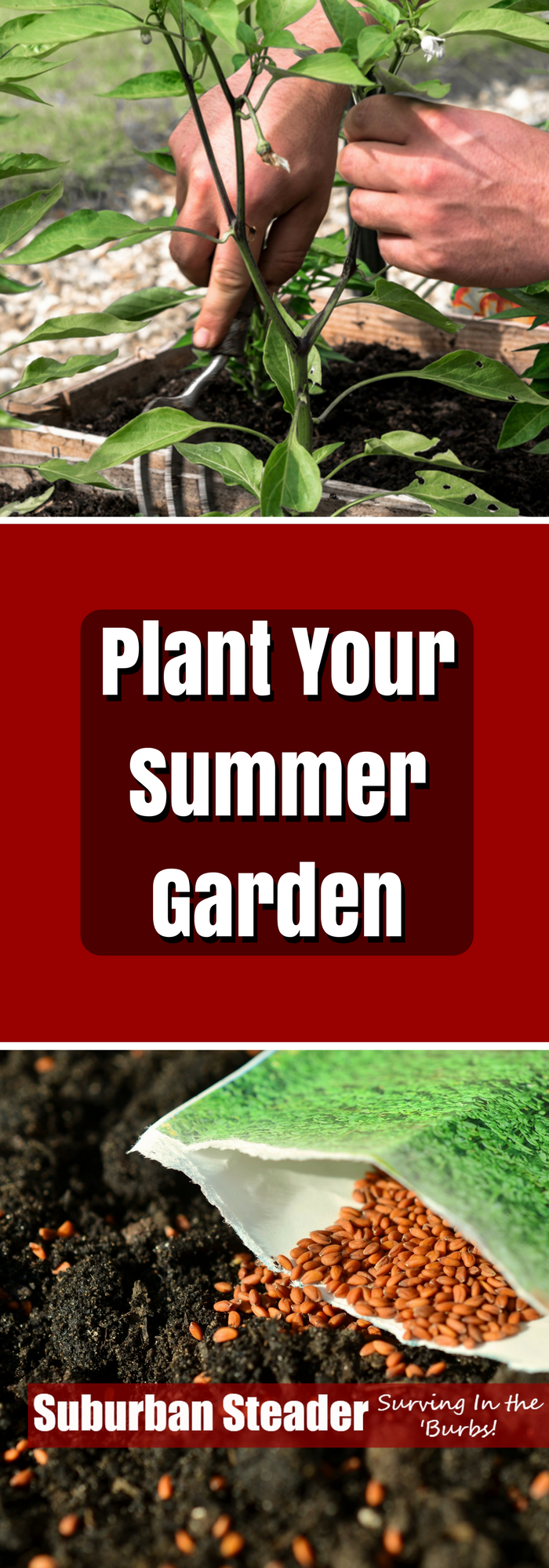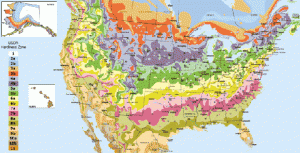Plant Your Summer Garden
If you’ve been following Project TWH, you’ve learned how to find room to homestead, performed a suburban homestead site survey, planned your summer garden and maybe even used the kill mulch technique to get your garden area ready. Now it’s time to really get your suburban homestead moving in the right direction – we’re going to plant your summer garden!
If you refer back to The Weekend Homesteader, you’ll see that planting your summer garden has four main components to it:
- Knowing When To Plant
- Succession Planting
- Knowing How To Plant
- Garden Maintenance
When To Plan Your Summer Garden
Determining when to plant your summer garden is probably one of the most frustrating parts of starting a suburban homestead garden. Plant too early and your crop is prone to late freezes that could kill it off early. Plant too late and your crop might bolt right to seed and have a horribly small yield.
What’s a gardener to do?
If you remember the 5 Tips To Start Your Garden that I provided a while back, you’ll remember that the first tip was to know your zone.
Your hardiness zone is a good indication of when last freeze and first freeze occur in your area and it also will have information about when to plant different species relative to these dates.
You can find more information on your hardiness zone by clicking here: USDA Hardiness Zone Map.
Back in the article on Planning Your Summer Garden, I gave you five or six different vegetables that I considered ‘easy’ to grow. In general, the swiss chard can be started about a month before last frost and the rest can be planted after the frost-free date. Mint can be planted just about any time of the year. You should consult with your seed providers and local nurseries for tips specific to your area.
Succession Planting
What’s worse than having a small harvest? How about a HUGE harvest that all happens at the same time? What are you ever going to do with ALL of these vegetables when they show up at the same time?
By staggering your planting, you will pretty much guarantee that not all your crops show up at the same time. How you use this method is up to you. Personally, I try to stagger plantings every week or so. That means that when the crop in one area is harvested, I’ll have some more coming up in another area a week later and a week after that in another area.
You can also use this approach to work with your schedule. Are you a teacher with the summer off? Plant so that there’s no harvest until mid-June. Or, if you plan to be on vacation mid-August, plan out your plantings so that nothing will be ready for harvest then.
How To Plant Your Summer Garden
You just dig a hole and throw the seeds or seedlings in. Right? Well, it’s not quite that simple, but it’s not terribly difficult either.
Here’s the really simple approach I recommend:
- Rake back the mulch
- Depress the soil as required
- Place seeds in ground
- Fill hole, tamp in place
It’s really not that hard. All you really need to remember is that the seeds you’re using need access to soil and water so making sure they are planted deep enough (but not too deep) is important.
If you’re using the Square Foot Gardening approach, I recommend building the garden stamp shown in the following video. Super easy to make and VERY useful:
[youtube_sc url=”yOZNRvlECic”]
If you’re using seedlings (or sets as others call them), I recommend planting them so that the first set of leaves is right above the soil. This approach gives the best chance for roots to grow and will also give your stems the most stability as they grow. You might want to consider some fertilizer when you plant your seedling as well. The application of fertilizer during planting will typically destress the situation for the young plants and give them the nutrients they need to begin growing in their new surroundings.
Summer Garden Maintenance
Again, this step isn’t rocket science. If you take the time to mulch, it will definitely help. You’ll spend much less time weeding and the water you apply to your summer garden will be retained much better.
Basically, you need to do three things to keep a garden in good order:
- Weed
- Water
- Harvest
You don’t have to worry about harvesting (with the exception of beans lettuce) for a while and the other two steps are relatively straight forward. It’s really hard to screw up a garden once it’s set, so take it easy and have fun.
Wrap Up
There you have it, how to plant your summer garden. It’s not terribly difficult and really is one of those things that you learn to do by doing it. So, please, go out and get your hands dirty this weekend! You’ll enjoy it!
Please let us know any tips you have for planting your summer garden in the comments or on our Facebook Page.
photo credit: Distant Hill Gardens via photopin cc

